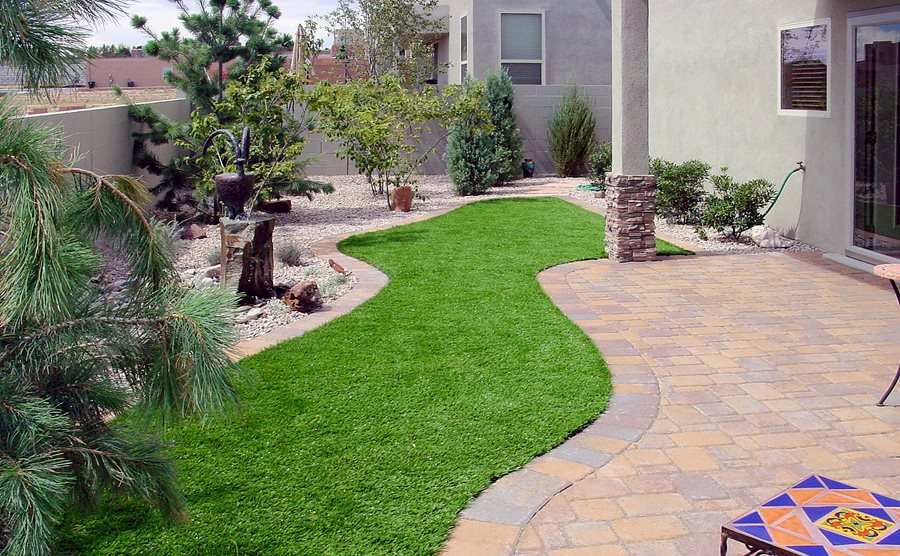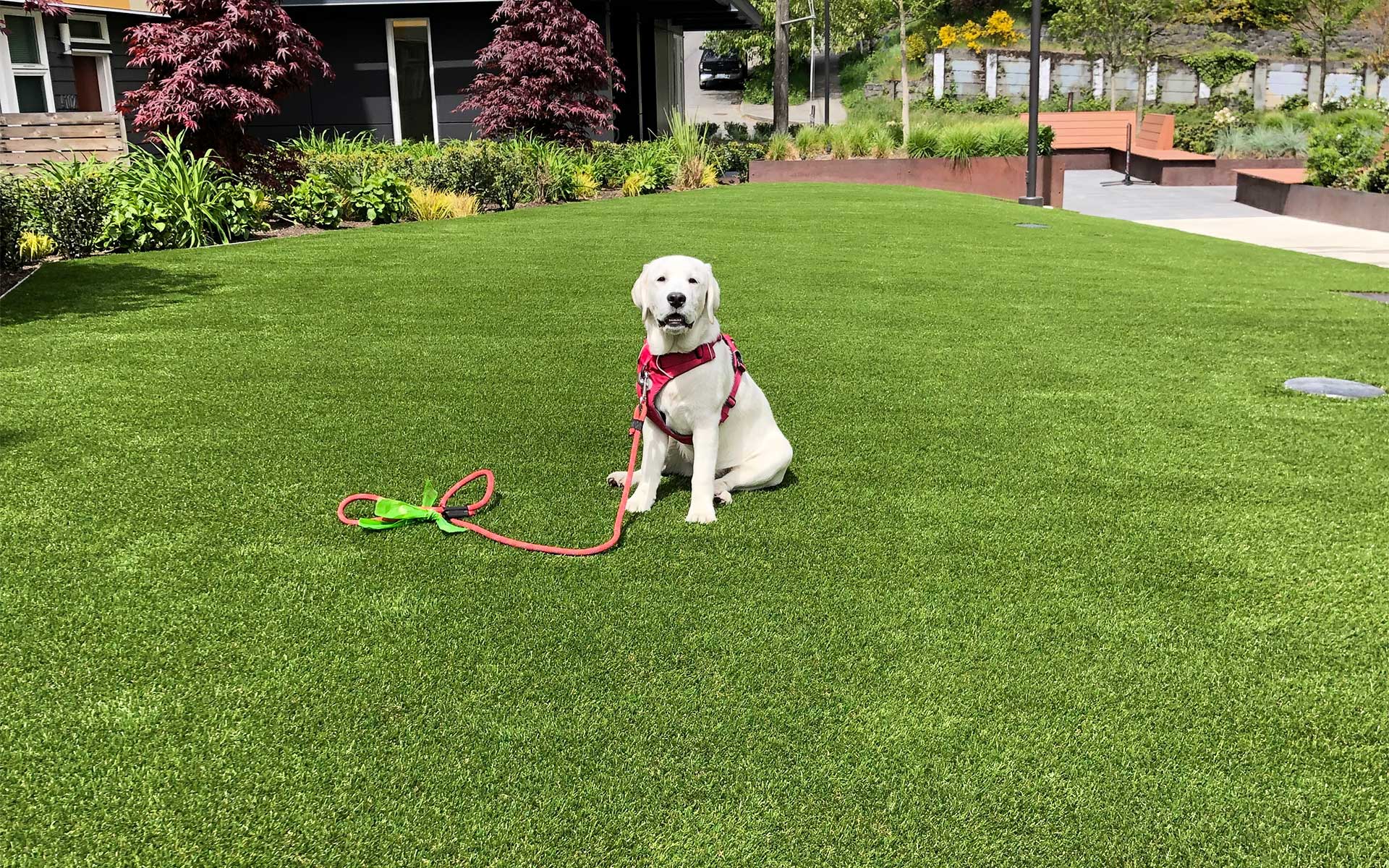Top Arizona Turf Suppliers Ensuring a Realistic Lawn Alternative
Top Arizona Turf Suppliers Ensuring a Realistic Lawn Alternative
Blog Article
Delve Into the Environmental Advantages of Opting for Artificial Grass Solutions
The fostering of artificial turf solutions offers an engaging chance to address pressing ecological obstacles. By dramatically decreasing water use and lessening the application of hazardous chemicals, these choices not just promote lasting landscaping however likewise protect regional ecosystems. Moreover, the lower carbon impact connected with decreased upkeep tasks adds to an extra lasting strategy to land administration. Nonetheless, the effects of these benefits extend beyond mere conservation efforts, questioning concerning their long-term influence on habitat preservation and overall environmental equilibrium. Checking out these measurements reveals an intricate interplay worth taking into consideration.
Water Conservation Conveniences
Among the most considerable advantages of synthetic turf is its capacity to conserve water. Standard lawn lawns require considerable watering, specifically in areas vulnerable to dry spell or water constraints. In contrast, man-made grass does not need watering, significantly decreasing the general need for water sources. This function is especially useful in arid regions where water deficiency is a pushing issue.
By eliminating the need for normal watering, man-made lawn adds to lasting landscape practices and helps mitigate the environmental influence of excessive water consumption. The preservation of water expands to the reduction of runoff, which can lead to dirt erosion and river air pollution.
In addition, the installment of synthetic grass allows homeowners and municipalities to allocate water sources more efficiently, concentrating on necessary uses such as drinking water and agriculture. The change in the direction of synthetic grass not just promotes liable water use but also aligns with wider ecological objectives focused on protecting natural deposits.
As communities progressively prioritize sustainability, the water preservation advantages of synthetic grass offer a compelling situation for its adoption in industrial and property landscaping projects.
Reduced Chemical Usage
The change to synthetic grass substantially decreases the reliance on chemical treatments commonly used in all-natural turf maintenance. Typical grass management generally involves the application of herbicides, plant foods, and chemicals to promote development and control bugs. These chemicals can present threats to human health and wellness, local wild animals, and the environment, adding to dirt and water contamination.
On the other hand, synthetic grass eliminates the demand for these unsafe substances. When mounted, it calls for minimal maintenance, mainly consisting of routine cleaning and irregular infill replenishment. This decrease in chemical usage not only benefits the instant atmosphere however likewise adds to more comprehensive environmental stability. By minimizing the launch of synthetic compounds into the environment, synthetic grass advertises healthier dirt and water systems.
Furthermore, the absence of chemical overflow connected with synthetic grass setups assists safeguard neighborhood waterways from pollution, sustaining marine life and maintaining biodiversity. Arizona artificial turf. As communities increasingly prioritize lasting methods, deciding for synthetic grass presents a sensible solution that straightens with environmental preservation objectives. Through this change, homeowner can take pleasure in lavish green spaces without endangering eco-friendly wellness, leading the method for an extra lasting future
Reduced Carbon Impact

Moreover, the installation of synthetic turf can result in significant water conservation. Natural lawns need substantial quantities of water for irrigation, which not just includes to the carbon impact related to water removal and therapy however additionally stress regional water resources. In comparison, man-made lawn requires very little maintenance, needing no watering, consequently dramatically decreasing water usage and its connected power costs.
In addition, the durability of synthetic grass contributes to its decreased carbon influence. With a life-span of as much as 15 years or even more, the need for constant substitutes is diminished, causing much less waste and reduced power consumption in production and throwing away typical yard options. Generally, man-made lawn provides a sustainable choice for ecologically conscious landscape design.
Environment Conservation
Habitat conservation is a crucial consideration in the dispute over landscape design options, especially when contrasting artificial lawn to all-natural lawn. All-natural turf yards often need comprehensive maintenance, consisting of using herbicides, fertilizers, and chemicals, which can negatively influence neighborhood communities. These chemicals can leach right into the dirt and rivers, harming indigenous flora and animals and interrupting regional environments.
On the other hand, synthetic grass presents a chance to decrease the eco-friendly impact of landscape design. By opting for synthetic lawn, property owners can decrease the disturbance of all-natural environments related to conventional lawn care techniques. Synthetic turf gets rid of the demand for damaging chemicals, therefore securing nearby wild animals and maintaining the honesty of surrounding ecosystems. The setup of fabricated turf can lead to the conversion of previous grass areas right into even more biodiverse landscapes, such as pollinator gardens or indigenous plant areas, which can sustain regional wild animals.
Inevitably, the change to synthetic grass not only preserves water and decreases upkeep initiatives yet also promotes a much more unified partnership in between human Full Report activities and the native environment, advertising environment conservation while doing so.
Long-Term Sustainability
Long-term sustainability is an essential factor in assessing the benefits of fabricated turf over conventional lawn lawns. Among one of the most considerable advantages of synthetic grass is its resilience; it can last as much as 15-20 years with very little maintenance, whereas natural turf requires regular reseeding and substitute. This longevity minimizes the need for consistent resources, such as water, plant foods, and chemicals, which are vital for preserving a healthy and balanced yard lawn.
Furthermore, fabricated lawn contributes to a decrease in carbon exhausts linked with grass care tools. Standard grass frequently call for gas-powered mowers, leaners, and blowers, all of which add to air contamination. Turf installation phoenix az. On the other hand, synthetic lawn eliminates the need for such tools, advertising a cleaner environment
Furthermore, the production of synthetic grass increasingly uses recycled materials, boosting its sustainability account. As makers take on eco-friendly techniques, the environmental impact of synthetic grass proceeds to lessen.

Verdict
The fostering of synthetic grass remedies presents substantial ecological advantages, including significant water preservation, reduced reliance on unsafe chemicals, and a reduced carbon impact. Man-made turf help in protecting natural environments by lessening land disturbance and advertising lasting sustainability through the usage of durable products. Bonuses Collectively, these elements highlight the possibility of man-made grass to add positively to environmental health and supply a viable option to conventional landscaping methods in a significantly resource-conscious globe.
In comparison, fabricated grass does not need watering, significantly lowering the overall need for water sources. By reducing the release of artificial compounds right into the community, artificial turf promotes much healthier dirt and water systems.
Moreover, the installment of fabricated turf can result in considerable water conservation. In contrast, artificial turf requires marginal upkeep, needing no watering, thus considerably minimizing water use and its linked power costs.

Report this page